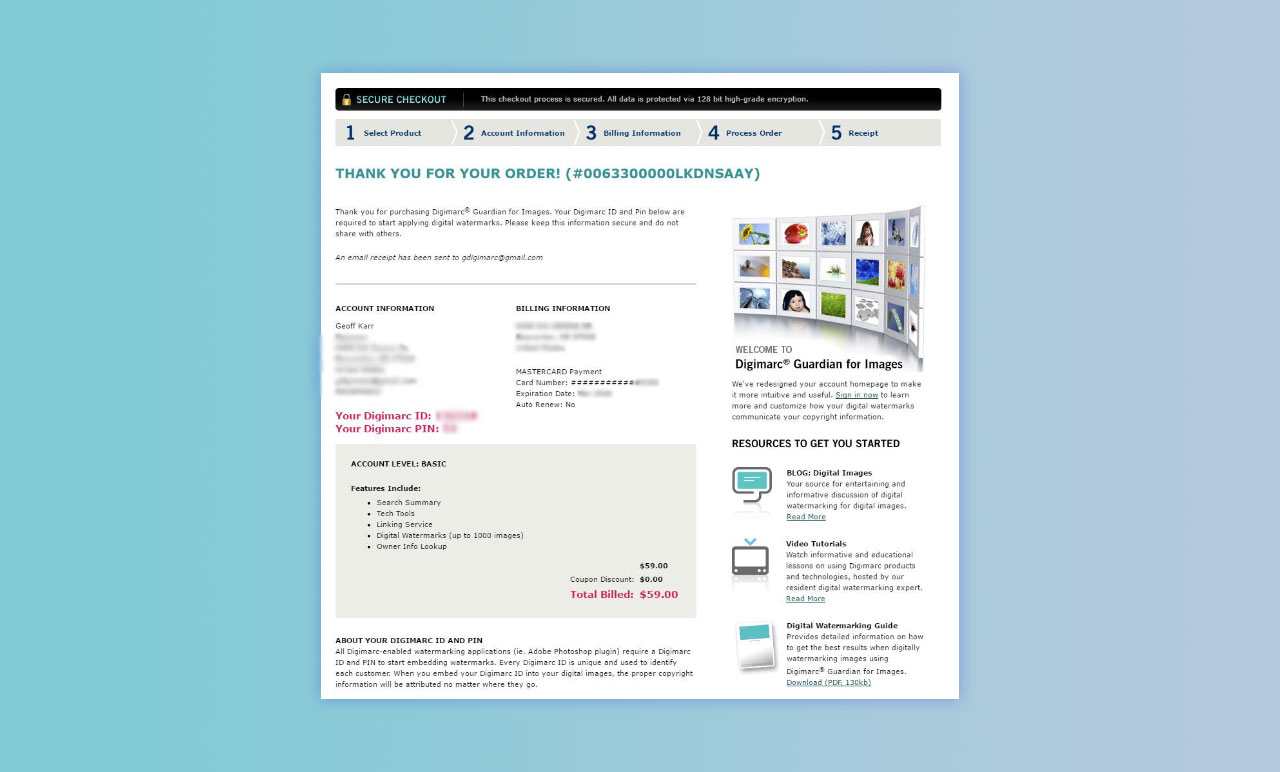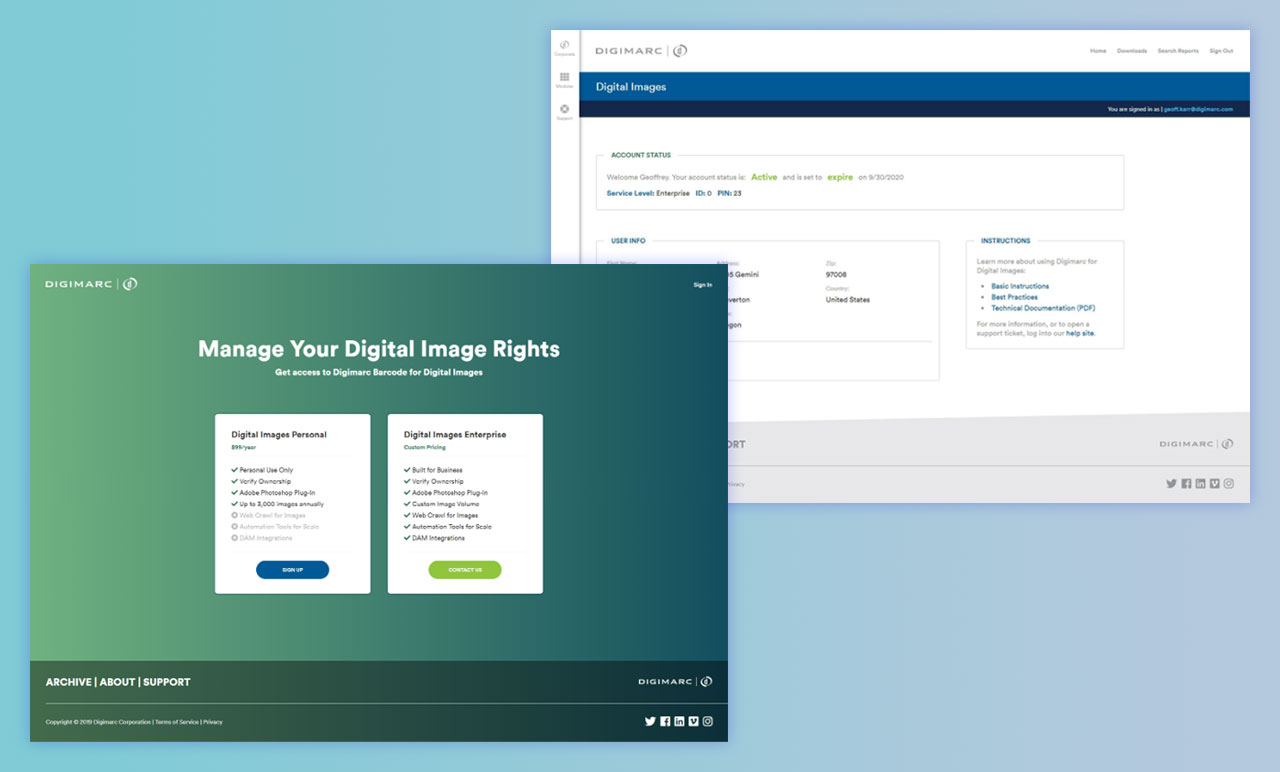Subscriptions
TL;DR // Results
I worked with developers and legal to modernize workflows and langauge around auto-renewal and subscription.
- Replaced an outdated "auto-renewal" system that locked the organization into "forever pricing" that cost the company in more ways than one.
- Implemented a user-friendly cancellation process, that reduced customer support calls and matched the new subscription service model.
- Implementation of this model served as a prototype for a shift towards feature and value based pricing across other product families.
Pretty wild how much UX work spawned from a quick reading of a legacy product's terms of service, but a good UX designer goes where the problems are, and it isn't always just solving some UI issue.
The Problem
A legacy Digimarc product with a sizable user base was using a payment system via Paypal that was being deprecated by Paypal. To continue serving our user base, we needed to update the payment system on a tight timeline, however the product itself had also been parked for a long time.
During a holistic UX review of the legacy product, I discovered some really wild allowances in the terms and conditions that would never fly today, including an "auto-renewal" option that locked in pricing in perpetuity. It was also rockin' a real 2008 look, and desperately needed more updates than to just the payment system.
With the patient on the table so to speak, we decided to make a few other updates. A nice part of working on this legacy product is that it operated as a bit of a sandbox for trying out new things and expanding out concepts to the rest of the larger organization, given that we could challenge some long standing business rules without disrupting higher profile clients.
Here's a look at the order page before I got to work on it:

The Fix
First up was the "auto-renewal" with a fixed price issue. Even though this offer was listed in the sign-up flow, our terms of service also explicitly stated that we could change the price whenever we wanted, I set out to correct this inconsistency in the terms of service.
I went in thinking this would be a simple change - remove the clause from sign up that promised a price guarantee. I ended up making things a little more complex by challenging our old concept of "auto-renewal" and applying the modern understanding subscription services.
Working with our IT development team and legal, I filled the role of product designer and product manager on the larger project, while interfacing with executive leadership on how to view our larger product suite through the lens of subscriptions.
When I took this to legal, and suggested that rather than being an "auto-renewal" customer or not, we have customers that are either "subscribed" or "unsubscribed," they requested we add something we should have had all along - an "unsubscribe" button. Previously we'd required users to call in to cancel, an unfair dark UX practice, so this ended up being a nice "two birds, one stone" situation where we got to both swap over to a subscription model as well as offer customers an easy one-click cancellation option.
We ended up lightly refreshing the entire product, delivering a more modern subscription experience, with a flexible system allowing for a la carte or tiered models. This gave us a great starting point as we began applying the same subscription model thinking to other product, service, and license models within the rest of the company's offerings.
With the subscription model in place, we were able to split the offering into tiers, and offer a much more intuitive feature set with clear pricing based on which features were added. As a cherry on top we reskinned the app to match our new branding and design standards.
Here is the after:

Impact
We began to export this model more or less to the rest of the business. Every service we offered was reimagined as a "product subscription" with pricing based on feature selection and usage rather than a flat usage price we had been employing for many years in the more important areas of the business that offered us no flexibility for volume, scale, or feature set.